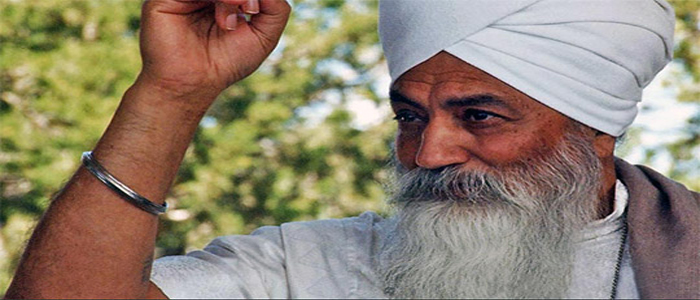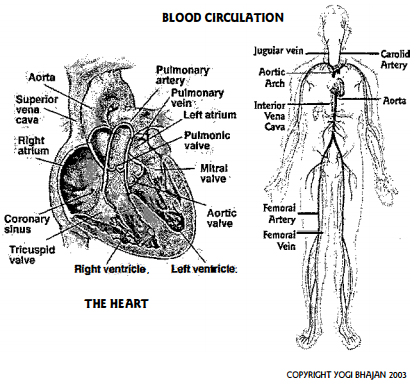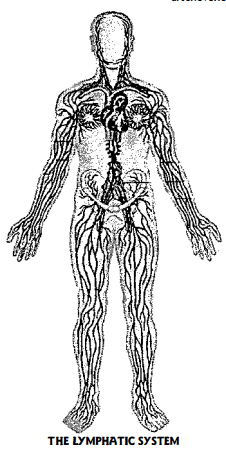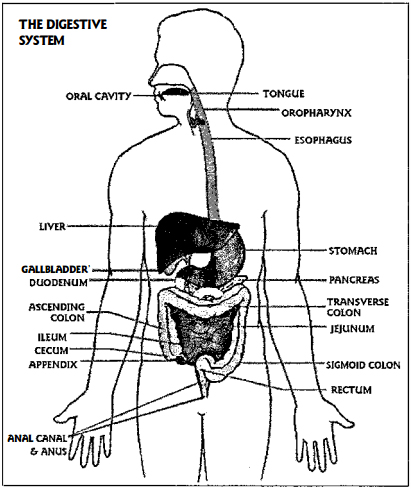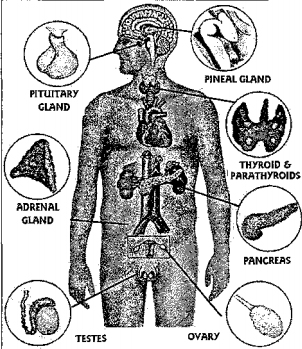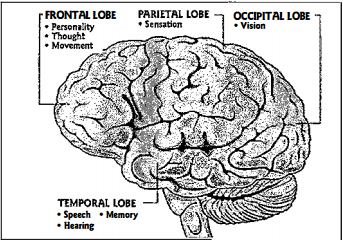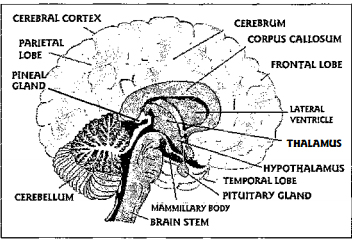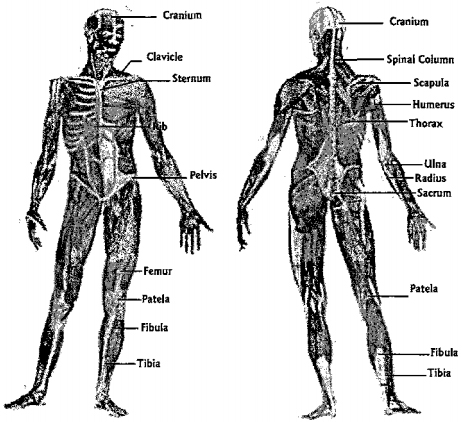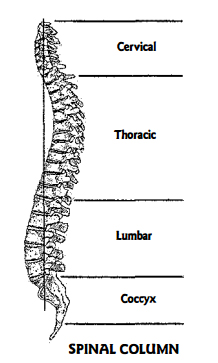” What is Kundalini? The energy of the glandular system combines with the nervous system to become more sensitive so that the totality of the brain perceives signals and interprets them. ” -YOGI BHAJAN COPYRIGHT YOGI BHAJAN 2003 This chapter includes … Circulatory System 158 Lymphatic System 159 Respiratory System 160 Digestive System 162 Endocrine System 164 Nervous System 166 Musculo-Skeletal System 168 Spinal Biomechanics 170 Caveats & Cautions for the Spine & Neck Immune System 171 Genito-urinary System 172
Circulatory System Organs & Components Heart Capillaries Arteries Veins Basic Organ Structure & Function Heart: Starting at the heart, blood circulates from the right atrium to the right ventricle. to the lungs, and back to the left atrium and left ventricle of the heart. From the left ventricle, the blood is pumped to the arterial system throughout the rest of the body and back through the venous system to the right atrium. Arteries: • Carry blood from the heart to the arterioles (small arteries) and capillaries (minute vessels that connect arterioles and small veins). • Have a muscular layer that is responsible for keeping blood pressure balanced. Contraction or relaxation of this muscular layer either reduces or expands the volume in the artery. Capillaries: • Al low nutrients, gasses, and waste products to migrate into and out of the circulatory system: the walls are very thin, and the total surface area of the capillary bed is large, providing a massive surface for nutrient exchange. ” Transport nutrients and oxygen to tissues. • Pick up waste products and carbon dioxide. Veins: Return blood from capillaries and venules (small veins) to the heart. Relationship to Other Systems The circulatory system delivers nutrients and oxygen to all organs. It also collects toxins for delivery to the lungs, liver, and kidneys for excretion. Negative Influences & Risk Factors • Diet high in cholesterol and fats, especially animal fats. which contain free radicals (molecules with a negative charge.) Free radicals in the circulation can damage the cel lular walls of blood vessels, which is the beginning of arteriosclerosis. the process in which scar tissue and cholesterol are deposited around the site of injury. Antioxidant vitamins help neutralize the negative charge and prevent injury to blood vessel walls. • Lack of activity, which is the number one cause of illness in developed countries. • Obesity.
• Bad posture. • Nicotine, alcohol, and salt consumption. • Ethnic or racial predispositions. For example, African Americans tend to have a disproportionate incidence of high blood pressure and other coronary risk factors. • Stress-induced high blood pressure, which usually has its source in mental, emotional, or physical over stimulation of the sympathetic nervous system and adrenal glands. This over stimulation causes increased heart rate and strength of contraction, along with increased resistance to blood flow at the extremities because of muscle tension around the blood vessels. Some Good Foods & Nutrients Wheat germ, alfalfa. buckwheat, celery, lecithin, green leafy vegetables, nuts, peas, beans, low-fat milk products. cayenne pepper, oranges, lemons. strawberries, calcium, Vitamin E. B vitamins, selenium. ginseng, oat bran and garlic (which lowers blood pressure) How Yoga Helps Relaxation with yoga helps reduce the impact of stress hormones such as cortisol and adrenaline. Experiments show meditators have increased cortisol production under stress. but the level is quickly reduced compared to non-meditators, thus they do not accumulate long term damage and lose the chemical responsiveness of the body to changing demands from the environment. Pranayam and aerobic exercise increase oxygen supply in the blood. • Yoga promotes weight reduction through increased metabolism. • Yoga strengthens the heart muscles. • Yoga increases the efficiency of blood flow by increasing the
number of small peripheral blood vessels. The volume of the circulatory system increases, and so does the efficiency of getting nutrition and oxygen to the peripheral tissues and waste products from the tissues. One of the mechanisms for this effect seems to be an increase in nitric oxide. which helps regulate peripheral blood flow at the local cel lular level. This mechanism is stimulated through exercise and meditation, especially when consciously paced breathing is used. Suggested Yoga Exercises & Other Support • Many of the more aerobic sets. such as Abdominal Strengthening (Sadhana Guidelines. p. 57.) • Heart Center sets (Sadhana Guidelines, p. 65 & 67.) • Relaxing tension, opening circulation, and moderating blood pressure: Left and alternate nostril breathing with deep, slow breaths (Sadhana Guidelines. p. 81.) Sitali and Sitkari pranayam (Sadhana Guidelines. p. 79.) Breath of fire. One-minute breath: 20 seconds inhalation, 20 seconds hold the breath. 20 seconds exhalation. • Arm. torso, and leg lift exercises. such as Ego Eradicator and cross-crawl exercises. • Spinal Twists, which assist the return of blood and lymph to the heart and assist in the elimination of toxins. • Cold showers, which stimulate and dilate the capillaries to improve circulation to the skin and outer layers of tissue.
Lymphatic System Organs & Components Lymph Ducts & Nodes Tonsils Bone Marrow Thymus Spleen Basic Organ Structure & Function • Parts of the lymphatic system are located throughout the body, with concentrations of lymph nodes in the groin, armpits, and neck. • The primary function is to return fluids from the peripheral tissues back to the circulatory system. • Bodily fluids are filtered and bacteria are killed at the lymph nodes. • Contraction of the muscles pumps lymph through the lymph ducts. • The bone marrow, blood vessel walls, and spleen manufacture, grow, and store lymphocytes (white blood cells), which help the body defend against infection. Relationship to Other Systems The lymphatic system facilitates the movement of salts, water, bacteria and wastes from the tissues and returns them to the arteriovenous system (the system of arteries and veins).
Caution! For students with high blood pressure: These students should consult their physician before commencing yoga, as people with high blood pressure are often cautioned to avoid strenuous exercises and tensing of the muscles that might increase blood pressure. For students with low blood pressure: These students should consult their physician before commencing yoga, as circulation to the extremities can decrease during prolonged yoga positions. They should also be careful not to stand up too quickly, which may result in fainting.
Negative Influences & Risk Factors The lymph system is often the body’s first point of contact with foreign bodies, chemicals and bacteria. It can be the route for the spread of infections and cancer in the body. The lymphatic system does not have its own pump like the circulatory system, so keeping it healthy is a process of constant detoxification through movement, breathing, and proper nutrition. Poor eating and a sedentary lifestyle allow the buildup of toxins, bacteria and other illness producing processes. • Drugs-particularly marijuana-lower immunity. • Poor mental or emotional states can depress the immune system. Some Good Foods & Nutrients • Onions, garlic. ginger, chlorophyll (yogic green drink), kelp, coenzyme Q 10. fresh and live fopds, that are high in prana • Antioxidants, and vitamins A, B 6 , B 12. and C; manganese; zinc; copper; selenium; Echinacea, and Goldenseal (take for specific conditions. not ongoing as a tonic.)
How Yoga Helps • Upper body yoga exercises support the lymphatic system. • Long deep breathing enhances lymphatic circulation. • Increased physical activity flushes the system mechanically and boosts immunity. • Yoga detoxifies the liver, lungs, and kidneys, taking pressure off the lymphatic system. • Yoga enhances a personal sense of well being, thereby boosting immunity. Suggested Yoga Exercises • Upper body exercises, particularly the dynamic use of the arms and shoulders, to stimulate and drain the upper lymphatic system. • Sat Kriya (Sadhana Guidelines, p. 44), leg lifts, and many navel exercises, which enhance circulation in the lower lymphatic ducts. • Massage for the Lymphatic System (Physical Wisdom, p. 8.) • Exercise Set for the Lymph System (Kundalini Yoga for Youth & joy. p. 18.)
Respiratory System Organs & Components Cilia (small hair like structures) Nose Lungs. Alveolar Sacs Pha rynx Ribs Larynx (voice box) 0. h Trachea (windpipe) lap ragm Bronchi (larger air passages in the lung) Bronchioles (smaller air passages in the lung) 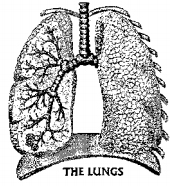 Basic Organ Structure & Function • The mechanics of breathing begin with the lungs. which reside in a chamber created by the ribs. rib muscles. and diaphragm. The diaphragm does the majority of the work of respiration. Elastic tissue within the lungs al lows them to expand and contract. Contraction of the rib and diaphragm muscles creates a vacuum in the chamber, which forces the lungs to expand and fill with air. When the diaphragm and rib muscles relax. the elastic tissue returns the lungs to their original size. expelling the air. Air travels through the nose and past the larynx, and into the trachea. The air then travels down into the air passages in
Basic Organ Structure & Function • The mechanics of breathing begin with the lungs. which reside in a chamber created by the ribs. rib muscles. and diaphragm. The diaphragm does the majority of the work of respiration. Elastic tissue within the lungs al lows them to expand and contract. Contraction of the rib and diaphragm muscles creates a vacuum in the chamber, which forces the lungs to expand and fill with air. When the diaphragm and rib muscles relax. the elastic tissue returns the lungs to their original size. expelling the air. Air travels through the nose and past the larynx, and into the trachea. The air then travels down into the air passages in 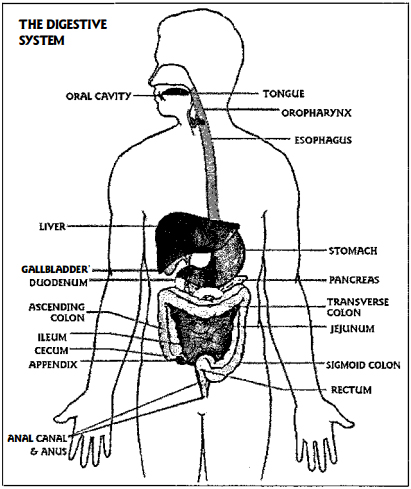 the lungs into thousands of alveoli. • Gasses pass across the alveolar cell membrane. Gasses in high concentration travel across this
the lungs into thousands of alveoli. • Gasses pass across the alveolar cell membrane. Gasses in high concentration travel across this
membrane to an area of lower concentration. Compared with the air in the alveoli, blood entering the lungs has a higher concentration of carbon dioxide and a lower concentration of oxygen. Therefore, carbon dioxide travels from the blood to the alveolar air while oxygen travels from the alveolar air into the blood. • Carbon dioxide dissolves readily in water. but oxygen does not. Therefore, red blood cells capture the oxygen and carry it to cells throughout the body where the oxygen, in conjunction with sugars and starches, is used to generate energy. The waste products of these chemical reactions are carbon dioxide and water. In the body, carbon dioxide is an acidic waste product, so the body maintains alkalinity by removing excess carbon dioxide through breathing. • Cilia in the smaller air passages in the lungs help move debris out of the air sacs into the larger air passages where they are coughed out or swallowed. Cilia in the nose also help keep debris out. Relationship to Other Systems • Breathing provides waste removal and oxygen for cells throughout the body. • The lungs cradle and cushion the heart. • Breathing creates a rhythmic movement of the spine and pumps the cerebrospinal fluid. • Controlling the breath can alter the heart rate. • Brain waves (and thoughts) can be altered by controlling the breath. • Rapid and erratic breath is associated with sickness. • Movement of the diaphragm helps pump the lymphatic fluid and massages the abdominal organs. Negative Influences & Risk Factors Smoking destroys the elastic tissue, cilia. and air sacs in the lungs. With the cilia destroyed, the lungs cannot remove debris from the air sacs. The body then increases the number of mucus glands in the lung’s small air passages so the debris can be caught in the mucus and coughed out. This is what we call smoker’s cough. When the air sacs are destroyed, the delicate tissue that allows oxygen to move into the blood is lost, which results in low concentrations of oxygen in the blood. When the elastic tissue is destroyed, the lungs cannot contract normally to their smal lest size, and the carbon dioxide that should be expelled remains in the lungs. When carbon dioxide remains in the body, the body becomes more acid. Breathing is by far the easiest way the body has to remove carbon dioxide and thus acid from the body. Some Good Foods & Nutrients Oranges, raw fruit and vegetables (especially carrots, beets, and radishes), all berries, nuts (especially walnuts), and millet.
How Yoga Helps Long Deep Breathing: • Balances the parasympathetic and sympathetic nervous systems, creating a deep. long-lasting relaxation. • Creates a pulsation at a certain rate in the brain. which stimulates the pituitary gland. the master gland, developing the intuitive consciousness. • Pumps the cerebrospinal fluid around the brain. • Reduces toxic buildup in the lungs by properly opening up the air sacs. • Stimulates the production of chemicals in the brain to work against depression. • Cleanses the blood of carbon dioxide to make the blood more alkaline. • Increases oxygen intake. • Helps release blockages to the flow of energy in the meridians. • Speeds up the physical and emotional healing processes. • Helps to break unconscious habit patterns and addictions. Breath of Fire: • Helps the body reach an optimum acid-alkaline balance, reducing irritability and plaque production in the arteries. • Stimulates the vagus nerve and balances the autonomic nervous system. • Cleanses the blood by removing toxins from the tissues. lungs, and mucus membranes. • Improves digestion. • Stimulates the solar plexus and frees the natural flow of energy through the body. • Strengthens the nervous system to handle stress. • Increases physical stamina. • Strengthens the nerve plexus or nabhi. • Helps to break addictions. • Increases the vital capacity of the lungs, improving health and the enjoyment of life. Suggested Yoga Exercises • All Kundalini Yoga sets. exercises, pranayam, and meditations improve the respiratory system. • Something New! (Yoga for the 80’s, p. 32), Exercise Set for the Lungs and Bloodstream (Yoga for Youth and joy, p. 21 ); in the “Sets” chapter of this manual) • Preparatory Exercises for Lungs, Magnetic field and Deep Meditation (Sadhana Guidelines, p. 85.) • Kriya for Physical & Mental Vitality (Kundalini Yoga Manual, p. 15) • Purifying the Self (Sadhana Guidelines. p. 74)
Digestive System Organs & Components Mouth Gall Bladder Stomach Liver Pancreas Small Intestines Basic Organ Structure & Function Large intestines Rectum The digestive system is a huge mining device. First the mouth crushes the food, and then the stomach turns large particles into smaller particles in a churning bath of acid. The gallbladder adds bile to the resultant slurry to turn large fat droplets into microscopic fat particles. Proteins are too large to cross the intestinal lining, so the pancreas adds protein-splitting liquids to break proteins into individual amino acids. Along the way, vitamins and minerals are released and made available for absorption. These extremely small particles are now actively transported across the intestinal lining by protein transporters or are absorbed into the blood. The blood transports this precious cargo to the liver, which builds most of the fats, proteins, and sugars that the body needs. What remains in the small intestine – fiber and other wastes-is transported to the large intestine for drying and is then stored in the rectum for evacuation.
Yogis have long understood the importance of the navel area, which is the autonomic mesenteric nervous system. It has as many neurons as the spinal cord does, but it distributes them diffusely over the abdominal area and intestines rather than consolidating them in a single tract. It is critical to many components of physical and mental health. Stomach: The stomach is both a processing area and a storage area, secreting acid and enzymes to begin digesting proteins while it churns the food. Ulcers can be caused by bacteria and aggravated by overly acidic conditions. The nerves in the stomach can vary in the number of receptors from person to person by a factor of more than 100,000. So some people are very reactive to emotions through the stomach. The stomach also produces a substance that allows absorption of vitamin B 12 for nerve development and maintenance. Small Intestine: The small intestine connects the stomach to the large intestine and is made up of the duodenum, jejunum, and ileum. At the microscopic level, the surface of the intestinal lining is covered with small protrusions much like the shag on a carpet. These protrusions increase the surface area to enhance the absorption of the end products of digestion. The small and large intestines contain about five pounds of biologically active bacteria that produce vitamin K among other things. Large Intestine: The large intestine is made up of the ascending colon, transverse colon. descending colon, and rectum. It connects to the small intestine at the ileocecal valve, which prevents the flow of waste from the small intestine to the large intestine. The large intestine absorbs water, salts, and products of bacterial activity (vitamin K. B vitamins, and amino acids) from the remaining digestive mix and then stores the mix for elimination and forces it out of the body. Liver: The liver is a five-pound organ below the diaphragm on the right side of the body. It is a giant factory that processes all the food nutrients absorbed by the small intestine into useful forms of sugar, fat, and protein. The liver and the kidneys both eliminate toxins ingested or produced by the body. If the liver is overworked due to stress and poor food, it becomes sluggish, which can result in fogginess of the brain, depression, and pain in various areas of the body as the body’s cells react to the toxicity of unprocessed chemicals. If part of the liver is removed, it will grow back to full size.
Gall Bladder: The gall bladder collects bile, which is made in the liver and which is necessary for the digestion of fats. When bile is needed, the gall bladder secretes it into the duodenum. the first part of the small intestine. The bile emulsifies fats and oils. Gallstones form from an imbalance of bile salts, cholesterol, and lecithin when the diet is too high in sugar. fat, meat, and carbohydrates. Pancreas: The pancreas, located under the stomach and directly below the navel, produces protein-splitting enzymes that are essential for good digestion and secretes them into the duodenum. The pancreas also produces insulin and glucagon to regulate how much sugar is in the blood. Insulin decreases the production of sugar by the liver and increases the absorption of sugar by the muscles that move the body and by fat cells. Glucagon increases liver sugar production and decreases sugar absorption by tissues. Diabetes occurs when there is not enough insulin. Negative Influences & Risk Factors • Diet of processed or fried food. • Lack of fiber in the diet. • Eating late at night. • Sedentary lifestyle. • Alcohol consumption. which is toxic to the liver. • Consistent dehydration. • Foods that are hard to digest. i.e. they don’t eliminate within 24 hours. • Stress. Some Good Foods For the stomach: yogurt, wheat germ, peppermint. ginger, and fennel . For the liver: beets. carrots, green foods, and daikon radishes. For the gall bladder: olive oil, cold-pressed oil, whole grains, nuts. carrots. beets, pear juice, grapefruit juice. lemon juice, grape juice. For the pancreas: avocado, alfalfa. potatoes, beets, carrots. olive oil, papaya, grapefruit, and lemons. For the small intestine: wheat germ. green leafy vegetables. cabbage, and oranges. For the large intestine: lots of water, green leafy vegetables, yogurt or acidophilus, and fiber.
How Yoga Helps • Yoga increases the fire energy at the Navel Point. which aids digestion. • Yoga increases the secretion of gastric juices and digestive enzymes and speeds up a sluggish metabolism. • Yoga improves the environment in the intestines so that harmful bacteria and other parasites cannot proliferate or survive. • Yoga increases the ability of the body to eliminate. • Upper arm exercises stimulate meridian points corresponding to the stomach and colon. • Yoga balances the liver. Suggested Yoga Exercises • Sat Kriya, Bow Pose, Camel Pose, twisting exercises. • Elimination (Apana) Exercises (Sadhana Guidelines, p. 55.). • Nabhi Kriya sets (Kundalini Meditation Manual for Intermediate Students. p. 1 7-20.) • The Art of Equilibrium of the Stomach (Owner’s Manual for the Human Body, p. 39.) • Kriya for the Lower Spine & Elimination (Sadhana Guidelines, p. 52) • Kriya for Physical & Mental Vitality (Kundalini Yoga Manual, p. IS) • Strengthening the Stomach (Owner’s Manual for the Human Body, p. 40.) • Exercise Set for the Liver, Colon and Stomach (Kundalini Yoga for Youth & joy, p. 14.) Caution! Many foods create a change in the function of the organs and glands of the digestive system. Grapefruit juice, even as little as eight ounces a day, has been shown to slow the liver and change the effect of many medications. St. John’s Wort has been shown to stimulate the liver to process more toxins, so it lowers the blood level of medications by processing them faster. Tell your doctor about all herbal supplements you are taking, along with any prescribed drugs.
Endocrine System Organs & Components Pineal Gland Pituitary Gland Hypothalamus Gonads: Ovaries (Female), Testes (Male) Thyroid & Parathyroid Adrenals Thymus Pancreas Basic Organ Structure & Function The endocrine glands are the guardians of the health. Optimal functioning of these organs gives us access to many of the subtleties of life. These glands produce powerful chemical transmitters called hormones. Despite their relatively small size and quantity, these glands exert a great influence on the growth, development and maintenance of the body. They aid the nervous system in regulating many bodily processes. Similar in function to nerve impulses, hormones transmit information with a daily rhythm in a pulsing fashion. The functions of the various glands are intimately intertwined. Pineal Gland: The pineal gland is small-approximately .5 em-and shaped like a pinecone. It produces hormones that regulate levels of sex and thyroid hormones and affect brain activity.
Endocrine System Organs & Components Pineal Gland Pituitary Gland Hypothalamus Gonads: Ovaries (Female), Testes (Male) Thyroid & Parathyroid Adrenals Thymus Pancreas Basic Organ Structure & Function The endocrine glands are the guardians of the health. Optimal functioning of these organs gives us access to many of the subtleties of life. These glands produce powerful chemical transmitters called hormones. Despite their relatively small size and quantity, these glands exert a great influence on the growth, development and maintenance of the body. They aid the nervous system in regulating many bodily processes. Similar in function to nerve impulses, hormones transmit information with a daily rhythm in a pulsing fashion. The functions of the various glands are intimately intertwined. Pineal Gland: The pineal gland is small-approximately .5 em-and shaped like a pinecone. It produces hormones that regulate levels of sex and thyroid hormones and affect brain activity.
1 64 • KRI I NTERNATIONAL TEACHER TRAINING MANUAL LEVEL I Pituitary Gland: The pituitary gland, or master gland, regulates the secretion of the thyroid, adrenal, and reproductive glands. It is located just beneath the hypothalamus in the middle of the brain. The pituitary gland produces hormones that influence blood pressure, milk, contraction of the uterus, ovulation, bone maturation and growth, protein synthesis, and use of fat reserves. Some hormones are the basis for feelings of connectedness and social bonding. A well-functioning pituitary gland helps us bond during sex. Hypothalamus: The hypothalamus is the main intermediary between the nervous system and the endocrine system, the two major control systems of the body. It is the center of mind-body phenomena. Located in the middle of the brain just above the pituitary gland, and no bigger than a walnut, the hypothalamus receives information from the brain, the cells, and the senses. It sends information throughout the body in the form of chemical messengers that trigger emotions, metabolic activity, and actions in a nonlinear wavelike manner. The optic nerves cross at and intersect the connection between the pituitary gland and hypothalamus. Thyroid Gland: The thyroid gland consists of two lobes on either side of the windpipe in the neck just above the sternum. Through the synthesis of many proteins, the thyroid controls body metabolism and growth along with the development of the nervous system. Too little of the principal hormone produced by the thyroid gland can lead to thickening of the skin, lethargy, obesity, and heart failure. Too much can lead to nervousness, anxiety, excessive weight loss, and heart palpitations. Depression and menstrual abnormalities are often caused by either too much or too little thyroid activity. Iodine is vital to the production of this hormone. Parathyroid Glands: The four pea-sized parathyroid glands are located within the thyroid gland. They control absorption, retention, and metabolism of calcium and phosphates. Adrenal Glands: The adrenal glands sit on top of the kidneys and produce two essential hormones: cortisol and aldosterone. Cortisol is the major controller of carbohydrate metabolism, and it helps the body respond to stress and illness. Aldosterone acts on the kidneys to promote sodium and thus water retention. The adrenal glands produce hormones that promote muscle growth, and they also produce adrenaline, which is responsible for the “fight-orflight” response. Thymus Gland: The thymus gland is located above the heart and beneath the sternum. The thymus gland is involved in maturing the white blood cells that help support the immune system in fighting illness. COPYRIGHT YOGI BHAJAN 2003 Pancreas: As mentioned in the digestive system section above, the pancreas produces insulin and glucagon. Insulin permits glucose to pass through cell walls to be used for energy and storage. Glucagon inhibits glucose absorption. Together they balance glucose levels. The pancreas also helps to control carbohydrate, fat, and protein metabolism. Gonads: The gonads (ovaries and testes) control secondary sex characteristics and ovulation, placenta formation, milk production in women and sperm production in men. Ovaries: The ovaries contain the eggs and produce estrogen and progesterone, the hormones that control the maturation and development of the eggs. These hormones also control the thickening of the uterine wall during pregnancy and it’s sloughing off during menstruation. Testes: The testes produce the hormone testosterone as well as sperm. The adrenal glands provide a small amount of testosterone in women. Testosterone levels affect the sex drive in both men and women. Relationship to Other Systems The nervous system, brain, and glands are intricately linked within the endocrine system. Negative Influences & Risk Factors • Chronic stress. • Exposure to pesticides that mimic hormones. Some Good Foods for this System Onions, garlic, ginger.
How Yoga Helps • Working on the chakras through stimulation of the kundalini energy positively affects the health and balance of the glands, which creates a sense of well-being, allowing the individual to feel connected to all life. • Focusing on the pituitary point-the Third Eye Point at the brow-activates the pituitary gland. Kirtan Kriya is excellent for this. • Kundalini Yoga, particularly breath control, can greatly enhance the activity of the pineal gland. • The breath strongly affects the function of the pineal and pituitary glands and the hypothalamus. • Sound and mantra have a powerful positive effect on the glands, particularly the endocrine centers of the hypothalamus and the pituitary and pineal glands. Suggested Yoga Exercises & Other Support For the adrenal glands Beyond Fatigue (Inner Workout, p.l8). For the adrenal glands: Exercises that twist and stretch the torso. For the pineal, pituitary, and thyroid glands: Wahe Guru Kriya (in the “Sets” chapter of this manual .) For the pituitary gland: Kirtan Kriya (Sadhana Guidelines, p. 95) Ajnaa Stimulation Kriya (Keeping Up with Kundalini Yoga, p. 26) Pituitary Gland Series (in the “Sets” chapter.) Breath Meditation Series for Glandular Balance (Sadhana Guidelines, p. 72.) Balancing the Pineal, Pituitary and Hypothalamus (Owner’s Manual for the Human Body, p. 47.) Exercise for the Nervous System and Glandular Balance (Yoga for Youth and joy, p. 35.) For the thyroid gland: Any exercises that involve movement of the neck, Neck Rolls, Cobra Pose, Cat-Cow, Shoulder Stand. For the thymus gland: Tapping on the chest, sets for the Heart Center. For the reproductive organs: Frog Pose, Sat Kriya, Camel Pose, and Tree Pose.
Nervous System Organs & Components Neurons Central Nervous System Peripheral Nervous System Spinal Cord Brain Basic Organ Structure & Function The nervous system is divided broadly into two components: the central nervous system, made up of the brain and spinal cord, and the peripheral nervous system, made up of the cranial. spinal, and peripheral nerves. Nerves function roughly like telephone wires that carry electrical signals (nerve impulses) from one place to another so that areas of the body can communicate with each Cell Body other. Nerve tissue is some of the most specialized tissue in the body. Because it stores memory, it gives up the ability to reproduce itself. though it can repair itself to some degree. For this reason, many injuries to the nervous system are often perma
nent. The nervous system learns. It grows and changes from stimulus, increasing the number of connections if there is more use and dropping connections if there is less use. Ultimately, all nerves end at an organ or a muscle or within the central nervous system. Nerves that end in muscles cause them to contract. Nerves that end in organs generally cause them to act or sometimes suppress their action. Nerve signals in the central nervous system cause the brain consciously or unconsciously to sense something and respond. Neurons: Nerves are made up of cells called “neurons.” Neurons are bundled into nerves, which together form the nervous system, and they communicate with each other via chemical signals. The Central Nervous System: The central nervous system (CNS) is involved in both conscious and unconscious sensation and is the source of voluntary motor control. It is the nervous system inside of the skull and spinal canal and consists of the brain and the spinal cord. These nerves depend on the bony protection of the skull and spine to prevent injury. There is a tough skin around the entire CNS called the dura, but within the CNS there is little fibrous structure around individual nerves. If there is a trauma severe enough to violate the skull or spine, there usually is damage to nerves. The central nervous system “floats” in cerebrospinal fluid that is contained in a sac attached to the skull and the vertebrae of the spine. This fluid is made in the cavities of the brain by filtering salt, sugars, water, and other nutrients from the blood, and it is reabsorbed into the blood. Recent studies show that the cerebrospinal fluid is balanced by secretion through the nasal sinuses. Blocking this self-cleansing mechanism is connected to a significant portion of our headaches-as much as 50%. The cerebrospinal fluid is the circulatory system of the central nervous system, bringing in oxygen and nutrients and moving waste products away. Cerebrospinal fluid is pumped through the central nervous system by spinal and cranial movement. Peripheral Nervous System: The peripheral nervous system (PNS) is the nervous system outside of the skull and spine. 12 pairs of cranial nerves and 31 pairs of spinal nerves make up the peripheral nervous system. Cranial nerves. such as optic nerves, olfactory nerves. and facial nerves. stem directly from the brain. Spinal nerves extend outward from the spinal cord and become the different nerve plexus of the body (such as the brachial, lumbar and sacral plexus). These nerves are surrounded by a fibrous sheath that functions almost like a conduit for electrical wires. The sheath protects the nerves from traumatic damage and keeps pressure from affecting them. Autonomic Nervous System: The autonomic nervous system. which is associated with our
capacity for emergency response, is part of the peripheral nervous system. It includes the sympathetic and parasympathetic nervous systems. The sympathetic nervous system is the “gas pedal” of the body; it sends the heart racing, speeds up the breath, and moves blood out to the muscles and away from the core of the body (i.e. the digestive system). It gives the body the message to go. The parasympathetic nervous system is the body’s braking system. It regulates the rebuilding functions of the body. It slows the breath, stimulates digestion, relaxes the nerves and shifts the circulation toward the core of the body. It is vital for handling stress since it coordinates the recovery period from stress. The Spinal Cord: The spinal cord connects the brain to the 31 pairs of spinal nerves of the peripheral nervous system. The spinal cord runs down to the lower vertebrae and is anchored at the tailbone. Sometimes a problem with the sacrum or tailbone can cause pulling on the spinal cord that results in various symptoms. In situations that require a quick response, such as touching a hot pan, the body must respond quickly. Reflexes go from sensory organs to the spinal cord and then out to the muscles without involving the brain so that the arm can respond faster. The nerves in the fingers sense the heat and send the signal to the spine, which is reflected immediately back to the muscles of the arm to pull the fingers away from the heat. Brain: The brain weighs about three pounds and consists of four areas: (I) The cerebrum provides the conscious functions of the brain, such as intelligence, intuition and sensory and motor functions. It has four lobes and is divided into the right and left hemispheres. The two hemispheres are connected by a broad band of nerve fibers that transmit messages between them. (2) The cerebellum controls muscular activity, patterns of movement, muscle tone, balance, and equilibrium. (3) The pons is the relay station between the cerebrum and the cerebellum and coordinates hearing, taste, eye movement, rhythm, and depth of breathing.
(4) The medulla oblongata contains reflex control centers and is the exit point for cranial nerves. The thalamus is the part of the brain that is the site of integration of the sensory system. The thalamus filters sensation and “decides” which sensations and thoughts will make it to consciousness and which will go unnoticed by the consciousness. It is pivotal in mediating sensation, movement, learning, and memory. Relationship to Other Systems • The nervous system and the glandular system work together to re-pattern the chemistry of the brain. The hypothalamus acts as the intermediary for these two vital systems. • The nervous system controls most of the other systems of the body via nerves or, less directly, via the endocrine system. • The autonomic nervous system sends either “go” or “relax” messages to all organs. • The cranial bones move with the rhythm of the breath, and this motion helps the cerebrospinal fluid to circulate. Negative I nfluences & Risk Factors • The nerves of the brain require a constant supply of sugar and oxygen that is provided by the blood. When there is inadequate blood flow or an interruption in blood flow, nerve damage rapidly ensues. This is called a stroke. • Drugs, particularly cocaine, prevent the parasympathetic nervous system from doing its job. Marijuana severely affects the functioning of the brain. It is like running an engine without oil, since it interferes with spinal fluid circulation. It also lowers testosterone levels and reduces the number of connections between neurons in areas that affect memory and motivation. Some Good Foods & Nutrients Calcium, magnesium, olives, lecithin, celery, cucumber juice, Yogi Tea, ginger, bananas, and onions. How Yoga Helps • Yoga increases the energy moving through particular nerve pathways. Breath of Fire particularly intensifies this movement. • Yoga balances the parasympathetic and sympathetic nervous systems. The yogic view is not necessarily to decrease the sympathetic stimulation but to increase the parasympathetic response. • As we age we lose brain cells. The interconnections between the brain cells increase through exercise, activity, and challenge, which leads to robust circulation and good glandular response. We now know that we generate new brain cells throughout life and that exercise, such as yoga, increases this generation of cells. Researchers speculate that depression comes in part from a slowdown in the production of the needed new cells. • The neural pathways in patients with chronic pain become hypersensitive to pain. One way to decrease pain is to increase the amount of information traveling down a shared neural pathway, effectively diluting the pain information. Increasing physical activity, such as doing yoga, produces this effect.
Meditations that include eye focus, mudra. and chanting aloud actively involve the function of the thalamus. Suggested Yoga Exercises and Other Support These primarily affect the Central Nervous System but have a secondary effect on the Peripheral Nervous System. • Gong meditation and chanting – rhythm and sound are the best ways to access the parasympathetic nervous system. • Cold showers create a powerful parasympathetic reflex. ‘ • Triangle Pose. • Sat Kriya (Sadhana Guidelines. p. 44.) • Exercises that involve rapidly changing hand and arm movements help to integrate functions in different areas of the brain. as well as to move the energy along the body’s meridians.
The Musculoskeletal System Organs & Components Bones (Long Bones. Membranous Bones) Muscles (Smooth Muscle. Cardiac Muscle. Skeletal Muscle) joints Ligaments Tendons Basic Organ Structure & function • To Activate the Central Nervous System and Stimulate the Pituitary Gland (Physical Wisdom. p. 14.) Pranayam: • Basic Breath Series (Sadhana Guidelines. p. 81) • Breath of Fire stimulates the parasympathetic nervous system (Sadhana Guidelines. p. 82.) • Left nostril breathing stimulates the parasympathetic nervous system and the calming. intuitive. creative faculties of the right hemisphere of the brain. • Right nostril breathing stimulates the sympathetic system and the action-oriented. analytical faculties of the left hemisphere. • Alternate nostril breathing balances the activity of the two hemispheres; it gives an experience of altered receptivity and readiness for action and integrates ideas into action. Femur (thigh bone) The musculoskeletal system is made up of bones, muscles. joints. and tendons. A JOINT Bones: Bones are made by depositing calcium and phosphate on a protein matrix. Most of the bones in the body are long bones. which have marrow in their center to help produce both red and white blood cells. The membranous bones are the flat bones. such as the scapula. sternum, and cranial bones. Muscles: There are three types of muscles: I) Smooth muscles are in the digestive system and the artery walls. They move slowly but are able to maintain sustained contraction for a long time with minimum energy consumption. 2) Cardiac muscles form the heart. They have the ability to function in a finely coordinated fashion and to work repeatedly over time. 3) There are two types of Skeletal muscles: Postural muscles are designed to remain contracted for hours without fatiguing. i.e. the muscles deep in the abdomen. Quick-twitch
• To Activate the Central Nervous System and Stimulate the Pituitary Gland (Physical Wisdom. p. 14.) Pranayam: • Basic Breath Series (Sadhana Guidelines. p. 81) • Breath of Fire stimulates the parasympathetic nervous system (Sadhana Guidelines. p. 82.) • Left nostril breathing stimulates the parasympathetic nervous system and the calming. intuitive. creative faculties of the right hemisphere of the brain. • Right nostril breathing stimulates the sympathetic system and the action-oriented. analytical faculties of the left hemisphere. • Alternate nostril breathing balances the activity of the two hemispheres; it gives an experience of altered receptivity and readiness for action and integrates ideas into action.
muscles are designed to respond and contract quickly. These muscles fatigue easily when compared with postural muscles. but are much more coordinated, i.e. the muscles in the hands. Skeletal muscles perform three functions: holding posture, performing movement, and producing heat. Skeletal muscles consist of thousands of bundles of protein fibers that move along each other. When activated by nerve impulses. these fibers contract. Muscles are held together with supporting connective tissue called “fascia.” Muscles get sore from heavy use because of the buildup of lactic acid. Muscle cramps occur if there is a deficiency of calcium and magnesium or when lactic acid accumulates because of a deficiency in oxygen while the muscle is working. This is why it is important to breathe deeply when exercising. joints: Between the bones are joints. which allow for motion. The ends of the bones are covered with smooth cartilage (a type of fibrous connective tissue) and lubricated with synovial fluid. This allows for effortless motion. Ligaments: Ligaments are bands of fibrous tissue that keep bones in proper alignment, and act as hinges for the joint. Possible problems include sprains. dislocations. and arthritis. A sprain is a strained muscle or ligament around a joint. Dislocation occurs when the rotating bone is displaced completely out of its socket. It often involves a tear in one or more ligaments surrounding the joint or
Tendons: Muscles often pull across joints and connect to the bones via tendons. which are fibrous cords for attaching muscle to bone. The fixed end is called the origin, and the moving end is called the insertion. The mechanics of muscle movement is based on two opposing muscles working together-one muscle relaxing and the other contracting, which allows finely controlled motion of the joint. Muscles can only pull in the direction of contraction-pulling the origin toward the insertion. Besides contraction, the other function of muscles is controlled elongation-allowing the origin and insertion to slowly move apart-that is, not simply releasing the joint but allowing the joint to slowly open up in a controlled way. Many injuries are the result of improperly controlled elongation. See the section on Spinal Biomechanics in this chapter. Relationship to Other Systems Muscles are the main heat generator in the body. Blood circulation is increased by movement. The body adapts itself to the increased energy needs of the muscles by increasing the heart rate and, therefore, the amount of blood that reaches the muscles. Rapid, deeper breathing brings more oxygen to the blood. How Yoga Helps • Yoga strengthens the nervous system through use of the muscles. • Yoga creates a balanced exchange of muscle contraction and relaxation. • Yoga releases muscle tension through stretching. • Yoga relaxes specific muscle groups and areas. • Muscle relaxation remains long after the yoga posture is complete; as a result. related organs and body systems are relaxed. • Yoga helps the body conserve energy by calming the body processes and the activity in the nerves; this energy is then available for meditation. • Yogic movement enhances blood circulation. • Yoga keeps the joints flexible; it helps to clean out deposits in the joints and helps to prevent the buildup of new deposits. Suggested Yoga Exercises • Flexibility & the Spine (Sadhana Guidelines p. 47) • Abdominal Strengthening (Sadhana Guidelines p.57) • Purifying the Self (Sadhana Guidelines. p. 74)
Spinal Biomechanics Basic Organ Structure & Function The spine consists of 32-34 vertebrae of which three to five vertebrae are fused into one bone, the sacrum. Yogi Bhajan often counts them as 26, which considers the sacrum functionally as one and the tailbone (coccyx) as one. The spine is divided into four regions of vertebrae: • 7 cervical (neck) • 12 thoracic (chest) a • 5 lumbar (lower back) .. · • 5 sacral (fused) • 3-5 coccyx (This number varies among individuals.) VERTEBRAE & INVERTEBRAL DISCS Between the vertebrae, intervertebral disks with elastic cores act as shock absorbers to avoid damage during movement. When this elastic core is squeezed out from its proper place, it presses on the nerves. This is called a “slipped disk.” The spine has two mutually exclusive functions that it needs to balance: it houses and protects the nervous system. and allows for mobility. When there is a conflict, protecting the nervous system is the body’s top priority and the muscles connected to the spine go into spasm to prevent mobility. The skull and spine house the central nervous system and have holes that allow nerves to communicate between the central and peripheral nervous systems. Negative Influences & Risk Factors Weakness in the Spine: Common problem areas in the spine that yogic practice can help are upper back, neck and lower back pain. Back pain that is not caused by a pinched nerve, is often caused by muscle imbalance and less than optimal spinal mechanics. People tend to be too strong and too tight in their front thighs, chest, and posterior neck muscles. People tend to be weak in the hamstring, buttock, abdominal, middle back, and anterior neck muscles. Weakness in the Neck: A muscle imbalance in the neck, especially weak anterior neck muscles, tends to produce a posture that reinforces the imbalance. The neck tends to straighten and shift the head forward, which puts a strain on the muscles of the upper back and back of the neck.
Weakness in the Lower Back: When the lower back is weak, it tends to arch forward and put pressure and strain on the joints in that region. Good yoga exercises for this weakness are those that involve stretching the overly tight muscles and exercising the weak muscles. Controlled elongation is the most important motion, especially in the abdominal area. This elongation is provided by controlling the lowering phase of leg lifts or sit ups-that means keeping the lower back pressed as flat as possible during any leg lifts and especially during Stretch Pose. (See the Form & Alignment Chapter in this Manual.) How Yoga Helps • Yoga re-hydrates the disks to normalize structure and function. • Long Deep Breathing expands the ribs and the spine; the cranial bones move with the rhythm of the breath, and spinal and cranial movement pumps the cerebrospinal fluid. • The movement of the sacrum circulates the spinal fluid. • Stretching resets the resting tension in the muscles alongside the spine, and strengthens and re-patterns specific muscles. Suggested Yoga Exercises • Kriya for the Lower Spine and Elimination (Sadhana Guidelines. p. 52.). • Flexibility and the Spine (Sadhana Guidelines, p. 47; in the “Sets” chapter.) • Basic Spinal Energy Series (Sadhana Guidelines. p. 45; in the “Sets” chapter.) • Exercises that strengthen the abdominal muscles. • Spinal Flex, Cat-Cow, and Cobra.
Organs & Components Bone Marrow Spleen Glands Lymphatic System White Blood Cells Basic Organ Structure & Function The organs of the immune system manufacture immune cells-white blood cells-that provide the body’s defense against chemicals, microorganisms, and cancer. The spleen is on the left side of the body below the diaphragm. It purifies the blood by removing damaged and old red and white blood cells. Thymus gland: Located near the heart, below the sternum, the thymus gland is involved in maturing white blood cells. It supports the immune system in fighting illness. Relationship to Other Systems The adrenal glands, thymus gland, hypothalamus, and pituitary gland all produce vital hormones in the immune system. Mental or emotional stress can affect this hormonal balance and weaken the immune system. Some Good Foods & Nutrients For the spleen: yellow vegetables, bananas, honey, sunflower seeds, yogurt, okra, citrus fruit, buckwheat, olives, cabbage, vitamins C, D, F. B complex, iron, copper, and manganese. How Yoga Helps • Yoga has a powerful cleansing effect, and it stimulates blood circulation and massages the internal organs. • By stimulating the hypothalamus, sound and rhythm have a powerful effect on the immune system. Suggested Yoga Exercises and Other Support • Immune Strengthening Workout (Inner Workout, p. 41.) • Strengthening the Immune System l & II (Physical Wisdom, p. 4 & 5.) • Exercise Set for the Lymph System (Kundalini Yoga for Youth and joy, p. 1 8.) • All pranayam. • For the spleen: sit in Rock Pose, place the hands on the thighs, exhale and hold out, and pump the stomach. • For the thymus gland: Bear Grip; thumping on the chest.
The Genito-urinary System Organs & Components Kidneys Ureters, Bladder, Urethra Prostate (males), Testes (males) Uterus (females), Ovaries (Females) Basic Organ Structure & Function The genital and urinary systems are studied together because they are so intertwined anatomically that problems in one often cause problems in the other. They share common neurological and anatomic pathways, such as the urethra. For a discussion of the genitals, see the section on the Endocrine System in this chapter. The urinary system consists of two kidneys connected by the ureters, which are long tubes, to the bladder for storage. A third tube, the urethra, leads from the bladder to outside of the body. The kidneys are located just above the waist in the back. They remove waste and excess water from the blood to produce urine. The bladder collects urine and can hold about one liter. When the bladder is unable to empty properly, this leads to tension in the back, neck, buttocks, backs of the thighs, and the outsides of the feet. Relationship to Other Systems The kidneys help eliminate toxins that accumulate in the blood. Also, they produce hormones that perform a number of functions, including stimulation of red blood cell production in the bone marrow and regulation of blood pressure. The kidneys respond to both neurological and hormonal messages. The kidneys control the water balance in the body. If they absorb more water back into the body, the blood volume goes up and so the blood pressure goes up. If they eliminate more water, then the volume goes down and the blood pressure goes down with it. Therefore, unhealthy kidneys will put a great deal of stress on all other organs and on the heart in particular. Sitting on top of the kidneys, the adrenal glands communicate to the kidneys primarily through the hormone aldosterone. Negative Influences and Risk Factors The kidneys are the most important organs for the elimination of toxins-even more important than the liver. They can be damaged by drugs, both legal and illegal. There is evidence that common drugs such as aspirin, ibuprofen, and antibiotics in even moderate doses can diminish kidney function. Probably the biggest insult to the kidneys is the failure to drink enough water. Eating a lot before bed compounds the problem, since the kidneys concentrate that waste all night. It is critical to monitor and deal with any symptoms of high blood pressure, as high blood pressure damages the kidneys and, ultimately, the heart.
Some Good Foods & Nutrients Kidneys: lots of pure water, all green vegetables, celery juice, cucumber juice, corn silk tea, basmati rice. (Note: Corn silk tea increases excretion of urine and is not appropriate for all conditions.) Bladder: eggplant, okra, green leafy vegetables, carrots, wheat germ, pumpkin seeds, olives, vitamins C and E. calcium. How Yoga Helps • The kidneys sit right under the diaphragm, so improving flexibility in the spine and diaphragm will open up the nerves and blood circulation in this area; exercises like Spinal Flex increase the blood circulation to the kidneys. • Many elements of a yogic diet stimulate the kidneys to eliminate wastes and decrease their workload by decreasing the intake of toxins. Suggested Yoga Exercises & Other Support • Toning the Kidneys (Owner’s Manual for the Human Body, p. 36.) • Exercise Set for Kidneys (Kundalini Yoga for Youth & joy, p. 22); in the “Sets” chapter. • Camel, Cat-Cow. • Stopping the flow of urine several times while urinating; this is good for strengthening the perineal muscles and helps to prevent incontinence.
 पौराणिक कथाओं, प्रेरक क्षण, मंदिरों, धर्मों, फिल्मों, हस्तियों के बारे में दिलचस्प जानकारी, हजारों गाने, भजन, आरती के बोल हैं Your wish may come true today…
पौराणिक कथाओं, प्रेरक क्षण, मंदिरों, धर्मों, फिल्मों, हस्तियों के बारे में दिलचस्प जानकारी, हजारों गाने, भजन, आरती के बोल हैं Your wish may come true today…
